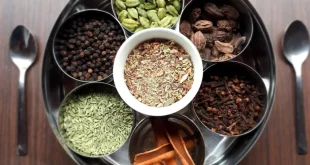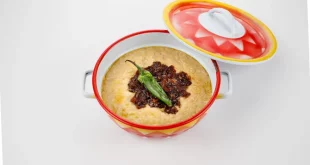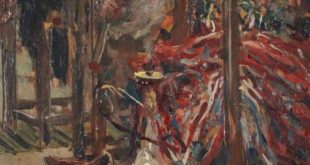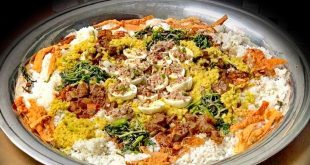By Syed Ali Mujtaba
Islam came to Tamil Nadu in its earliest days when the Arabs became Muslims. The Keelakarai Jumma Masjid, built in the 7th century, with prominent Tamil architectural characteristics, is one of the oldest mosques in Tamil Nadu. So is the mosque near the Kottai (Fort) Railway station in Tiruchi which is dated 743 AD.
The Arabic inscription of A.H. 116/134 AD at Tiruchirappalli and the inscriptions of the ninth century at Kayalpattanam about endowments given to the mosques by Pandya rulers are conclusive pieces of evidence about the presence of Muslims in Tamil Nadu right from the eighth century.
The early Muslims settled in the coastal towns of Tamil Nadu and functioned as a guild for themselves. They were called ‘Anjuvannam’ meaning assembly or congregation. The name ‘Anjuvannam’ is found in some copper plates and inscriptions of the 12-13th centuries AD that is considered to be the merchant guild of the Muslims. An old mosque in Thenkasi, Thirunelveli District is called ‘Anjuvannam Pallivasal’ that exists even today testify that the name ‘Anjuvannam’ is attributed to the Muslims.
Categories of Muslims in Tamil Nadu
If one has to randomly bracket the Muslims of Tamil Nadu, there can be broadly three categories. First, the Muslims of Arab-Tamil ancestry, second local converts to the Islamic faith, and the third Dakani Muslims who migrated from other parts of India to Tamil Nadu.
Muslims of Arab Ancestry
The Muslims of Arab-Tamil ancestries are the Tamil-speaking people who form a distinct category among the Muslims in Tamil Nadu. The prominent groups among them are the Marakkayars, Labbais, Rowthers, Sonaka Mapillas, Kayalars, and Thulukkar.
Marakkayars- Marakkayars are boat people of Arab descent. They are a maritime trading community since the 7th century. They traded in pearls, rubies, and other precious stones. The majority of the Marakayars currently live in coastal areas like Keelakarai, Kayalpatnam, and Nagore. They claim a higher social and economic status than other Muslim communities. They marry within their community from Keala, Sri Lanka, or their folks in Southeast Asian countries. The 11th president of India A. P. J. Abdul Kalam was born in a Marakkayar family. Educationist B. S. Abdur Rahman, the founder of Crescent College which is now B. S. Abdur Rahman University also belonged to the Marakkayar community.
Labbais – Labbais are also descendent of Arab merchants. They brought with them some Arabs as helpers who used to respond to the calls of their masters with the word ‘Labbaik’ which means “Here I Am”. Hence these Muslims and their offspring came to be known as ‘Labbais’. Their children of Arabs through their Indian wives are also known as ‘Labbais’. The word Labbai is also applicable to the Hindu converts to Islam. The Census Report of 1881 says that “the Labbais are distinct from Marakkayars. They are known as Coromandel Moplas, with a slight admixture of Arab blood and native converts. They are thrifty, industrious and enterprising, plucky mariners and expert traders.” Currently, ‘Labbais’ is considered to be a class name of the Muslims for the purpose of educational and job concessions in Tamil Nadu.
Mapillas-The Malayalam-speaking people of Malabar were known as Sonaka Mapillas in Tamil Nadu. The word Sonaka was also the early name of the Tamil Muslims. The word was used to identify Muslims of Indo-Arab descent and the Arab part of their ancestry was Yemen. The word Sonaka got corrupted as “Yavana” that finds mentioned in the ‘Sangam’ literature of the 2nd century AD.
Rowthers- Rowthers is another group of Tamil – Arab descent whose mother tongue is Tamil. They were mainly connected with the horse trade or were horse trainers or cavalrymen in yore. They were also known as “Guthirai Chettigal” meaning horse traders. Rowthers are a prominent and prosperous Muslim community in Tamil Nadu. They are settled in the Thanjavur, Tiruvarur, and Nagapattinam districts.
Kayalars- Kayalars are another major group of Tamil Muslims of Arab descent. They make up the four major sub-groups of the Tamil Muslim community’s Arab ancestry.
Thulukkar – There is a Muslim group referred to as Thulukkar which means people of Turkish origin. Several works of Tamil literature refer to the Muslims as Thulukkar. This term is commonly used by non-Muslims to address all the Muslims in Tamil Nadu.
All these Muslim groups have linked up with Tamil culture and society through marriage alliances with the locals and most of these groups have their occupations as merchants and traders and are currently business people.
Pasmanda Muslims of Tamil Nadu
The second categories of Muslims are converts from Hindu OBC and Dalit communities. These conversions happened over centuries through peaceful preaching by the Sufi saints who came from the Arab lands. The Islamic preachers went to the underprivileged sections of the caste-ridden Hindu society and converted them to Islam to free them from the bondage of caste slavery. The local converts are at the bottom of the social structure. Though their social status may have improved after the conversion to Islam they remain economically deprived and come under the Pasmanda Muslim community in Tamil Nadu. They are a distinct group in the Tamil Muslim society and are in need of social intervention to climb the economic ladder. These converted Muslims face the problem of reservation in government jobs. While converts to Christianity are considered as ‘Backward Classes’, there are no such provisions for Muslims.
Dakini Muslims of Tamil Nadu
The third category of Muslims in Tamil Nadu is the Dakini Muslim community. Dakini Muslims are a distinct community even though this group is only a small minority in the Muslim society. Their importance derives from the fact that they form the political elite among the Muslim community of Tamil Nadu. Dakini Muslims can speak Tamil/Hindi/Urdu and other regional languages. These categories have numerous groups among them namely, the Syeds, Shaikhs, Pathans, Mughals, or Navayats (a subgroup of Konkani Muslims). Among Dakani Muslims one of the notable groups is the ‘Pathans’ the Muslims of Pashtun ancestry. The term “Pathan” sometimes extends to all Urdu-speaking Muslim migrants from North India. They are settled in fortress centers such as Arni, Chanji, and Jinji and in Arcot. The lesser fort-mart towns like Trichy and Madurai also have Pathan settlements. It is also the catchment area for Tamil Muslims in the Indian Armed forces.
Muslim Weavers of Tamil Nadu
The earliest epigraphic evidence of Muslim weavers of Tamil Nadu is from the 16th century which suggests the active role of Muslims in the weaving industry of this Southern State. ‘Pañchu Kotti’ and ‘Achchu Katti’ are the most important Muslim weaver communities of Tamil Nadu. The Pañchu Kottis are densely populated in the modern Trichirappalli and Thanjavur districts. The Achhcu Katti is densely populated in the areas around Salem, Namakkal, Trichy, and Thanjavur districts. These areas are textile centers of Tamil Nadu and Tamil Muslims have a sizable hold over the textile business.
Tamil Muslims are not a homogeneous community
Tamil Muslims are not a homogeneous community. These three broad categories of Muslims are riddled with a maze of groups and subgroups. During British rule, certain Tamil Muslim groups began to be listed as social classes in the official gazettes. Tamil Muslims are divided into various divisions and their class hierarchy exists that has become a caste-based hierarchical division over a period of time. Even though each group has a professional identity the fact is these professional groups have fossilized into caste-like formation, and crossing over from one to another is ruled out.
Rise of Tamil Muslims of Arab Ancestry
The Tamil-speaking Muslims of Arab-Tamil ancestry are mentioned in the Tamil Sangam literature of the 2nd Century AD. The word “Yavana” in the Sangam literature is not used for Greeks but is for Muslims who have come from Yemen.
The Muslims of Arab ancestry were traders and merchants who inherited their dominant position in South and Southeast Asian trade from the Arabs, who had acquired a virtual monopoly of Indian maritime trade and commerce from the third century. The Tamil-speaking Muslims of Arab-Tamil ancestry dominated maritime trade on the Coromandel coastline till the 15th Century. They were the lord and masters of the Indian Ocean region for close to 15 hundred years.
The Chera, Chola, and Pandya rulers patronized them and donated lands for their places of worship. The native Hindu rulers of Tamil Nadu and Kerala encouraged Arab-Muslim traders to settle down in their lands. The Zamorin or the hereditary monarch of the Kingdom of Kozhikode (Calicut) in Kerala issued an edict to get a sufficient number of Arab Muslims to maintain their ships. He issued a decree that the Arab traders can marry a local woman and bring up one or more male children as a Muslim.
The Arab-Tamil-speaking Muslim traders brought much prosperity to India. A 14th-century Arab writer, Ibn Fadbullah ul-Omari, had written that in India, seas were pearls and trees were perfumes! English records describe the ports on the Tamil Nadu coast as “Moor ports,” Cuddalore is mentioned as ‘Islamabad” and Porto Novo or Parangipettai, as “Mohammad Bandar.”
Thousands of records abroad speak about the maritime activities of the Arab-Tamil Muslims, where they are portrayed as shipbuilders, mariners, sailors, traders, pearl divers, pearl merchants, and salt manufacturers. The whole economy of the eastern coast of Tamil Nadu was in the hands of Arab Tamil Muslims, and it was these people who took Islam and Tamil language from Tamil Nadu to Southeast Asian countries.
Tamil – Arabic link language- Lisan Al-Arwi
Arabs had a problem interacting with Tamil, a Dravidian language as their language Arabic was a Semitic language that had no connection with Tamil. So a link language called ‘Arabu Tamil’ (or Lisan al-Arwi ) was developed in Tamil Nadu. It synthesized the two languages where Tamil was written in an adapted Arabic script. This helped Arabic settlers in Tamil Nadu to learn Tamil through Arabic script. This language helped in writing accounts of their business activities. Arab Muslim traders and the native Tamil converts to Islam came into closer contact as a result of this link language. The Arwi language and literature provided a kind of platform for Islamic teachings and learning. In the words of Edgard Thurston, Arabu-Tamil is a language developed for the benefit of the Tamil Muslims of Arab ancestry. Even today, many religious schools (madrassas) teach Arwi language as part of their curricula. Textbooks like ‘Simtus Sibyan’ (a guide for youngsters) are still available in bookstores in Tamil Nadu. The coming of the modern printing press put an end to the spread of the Arwi language.
Fall of Tamil Muslims of Arab Ancestry
The Arab Muslim monopoly over mercantile trade declined around the 15th century, after the arrival of European traders like the Portuguese, the Dutch, the French, and the British into the Indian Ocean region. The power of the Arab Muslim mercantile community declined due to stiff competition from the European seafarers and their reluctance of them to adopt new shipping technology and modern trade practices.
It was the Portuguese who came first, followed by the Dutch the French, and the English. The European merchants introduced the system of monopolies and unfair trade practices based on their military might and political clout. The local rulers, both Hindu and Muslim, were indifferent to the maritime trade. They had no time or interest in maritime trading activities. They did not make any effort to explore trading avenues or make maritime trade grow along healthy lines.
The Indian rulers instead of protecting the interests of the local Muslim traders extended all facilities to the Portuguese and invited them to their ports. The Indian rulers gave the Portuguese the monopoly to trade in spices, gold, and silver. The Portuguese converted Paravas, an oppressed Hindu fishing community to Christianity by 1537. They assisted them to supplant the Muslims from the pearl fishing trade. In this way, the Pearl trade was entirely in the hands of the Muslims and passed into the hands of the Paravas. The Tamil Muslims also lost their monopoly over the horse trade to the Portuguese by 1530.
When the British arrived, they supported the Chettiars, a community of Hindu traders from Karaikudi in Tamil Nadu. This was done systematically to further weaken the Muslim traders of Tamil Nadu. The Chettiars supported the British with their money for their Indian conquest. As a result, the presence of the Chettiars in the economic scene on the Coromandel Coast and South East Asia, increased, while that of the Tamil Muslims declined.
Current Status of Muslims in Tamil Nadu
The Muslim population in Tamil Nadu is 6 percent. Most of the Urdu Muslims are concentrated in Vellore districts like Ambur and Vaniyambadi. In the North Arcot district and present Vellore District, they own the tanneries and are engaged in the leather trade. There is a clear-cut divide between Muslims of north Tamil Nadu and those from the South of the state. In the southern districts, Muslims are concentrated in districts and places like Ramanathapuram, Pudukkottai, Tirunelveli, Nagapattinam Pulicat, Kilakkarai, Kayalpattanam, etc.
The Tamil Muslims in Southern Tamil Nadu are engaged in cotton manufacturing activity and in these districts spinning and weaving cotton is the mainstay of their trade practices. Towns such as Nagore, Kayalpatanam, Kilakkarai, and Adirampatanam in South Tamil Nadu have become centers of wealth generation among the Muslim community. Some of these places have also emerged as centers of Islamic teaching and learning.
Tamil Muslims have contributed their best to the Tamil culture and society. Their manners, customs, dress, food, and festivities have been influenced by Islam and the Tamil language and culture. A true synthesis of Tamil and Islam can be seen in Tamil Nadu.
Tamil Nadu is a very good example of an inclusive society where people of different races and religions and languages are equally respected. In terms of communal harmony, Tamil Nadu is an oasis in India where religious toleration between communities is preached and practiced in the true sense of the word. Here Tamil nationalism and pride in the Tamil language and culture is the rallying point for peaceful coexistence.
——–
Syed Ali Mujtaba is a journalist based in Chennai. He can be contacted at [email protected]. This write-up is prepared after reading Dr. J Raja Mohamad,’s book: Maritime History of the Coromandel Muslims, (A Socio-Historical Study on the Tamil Muslims 1750-1900), published by the Government Museum, Chennai, India, in 2004.
Post Disclaimer | Support Us
Support Us
The sailanmuslim.com web site entirely supported by individual donors and well wishers. If you regularly visit this site and wish to show your appreciation, or if you wish to see further development of sailanmuslim.com, please donate us
IMPORTANT : All content hosted on sailanmuslim.com is solely for non-commercial purposes and with the permission of original copyright holders. Any other use of the hosted content, such as for financial gain, requires express approval from the copyright owners.
 Sri lanka Muslims Web Portal Sri Lanka Muslims News Center
Sri lanka Muslims Web Portal Sri Lanka Muslims News Center
 Donate
Donate


